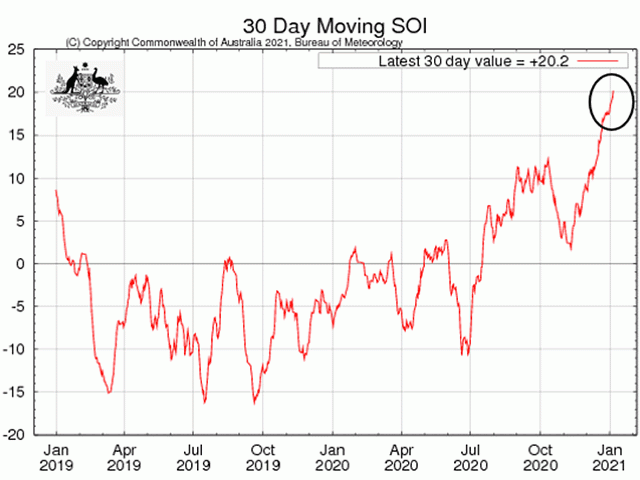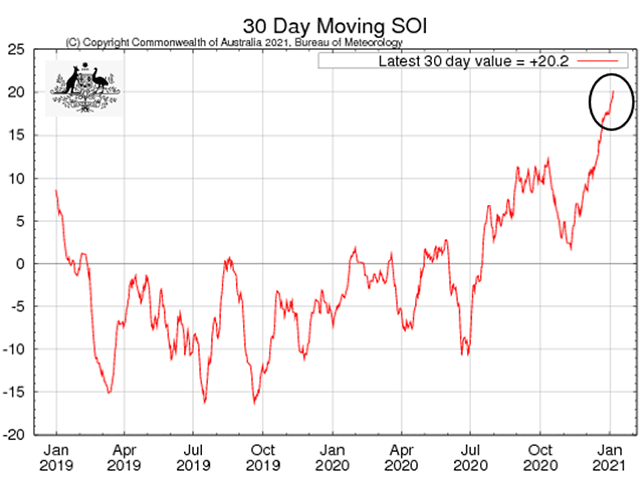South America Calling
South America Still Run By La Nina
La Nina remains in place -- and in effect -- over the equatorial Pacific Ocean, along with its impact on South America's weather pattern.
Sea surface temperatures in the eastern half of the equatorial Pacific have widespread values of one to two degrees Celsius below normal. The Southern Oscillation Index atmospheric pressure value is also at La Nina levels, with a 30-day average of plus 19.56 and a 90-day value of plus 10.69. The presence of La Nina continues to suggest drier conditions in southern Brazil and Argentina through the balance of the current crop year.
P[L1] D[0x0] M[300x250] OOP[F] ADUNIT[] T[]
In Argentina, crop conditions are much lower than a year ago, an indication of dryness stress. The Argentine corn crop is reportedly rated only 15% good to excellent compared with a 55% total of good-to-excellent conditions a year ago. Dry conditions have also affected the total crop acreage in Argentina; 15% of intended corn acreage is reportedly still not planted. Scattered showers are possible on Saturday. Forecast models are a little more aggressive with rainfall Sunday to Monday and possibly next week. However, the rain is unlikely to offer significant benefit for crop prospects.
Across Brazil, central crop areas have only isolated moderate to heavy rain. Crop health is mixed for corn and soybeans. Southern areas have more widespread crop health issues due to dryness, notably in Rio Grande do Sul. Scattered showers continue over the rest of the country. A frontal boundary may bring more widespread heavy showers to southern areas early next week. Crop benefit will be variable, however, due to the impact of dryness already in effect.
It should be noted that the SOI is below the value of what became a multi-year La Nina 10 years ago. The December SOI value in 2010 was a plus 27.03, whereas the monthly SOI value for December 2020 was about 10 points lower at plus 17.52. Nonetheless, that's a healthy La Nina number, and indicates the influence of La Nina has a strong likelihood to loom over the balance of the South America 2010-21 crop season.
Bryce Anderson can be reached at bryce.anderson@dtn.com
Follow him on Twitter @BAndersonDTN
(c) Copyright 2021 DTN, LLC. All rights reserved.





Comments
To comment, please Log In or Join our Community .